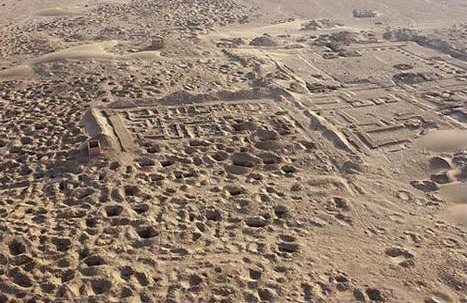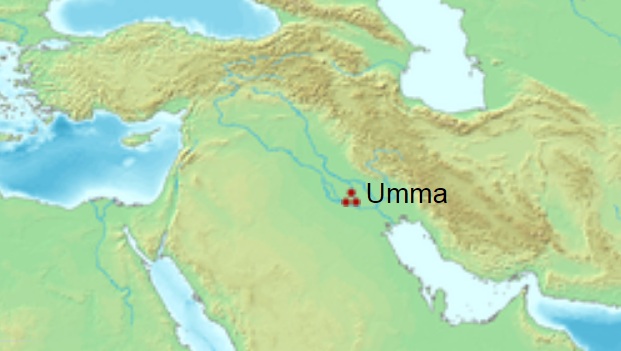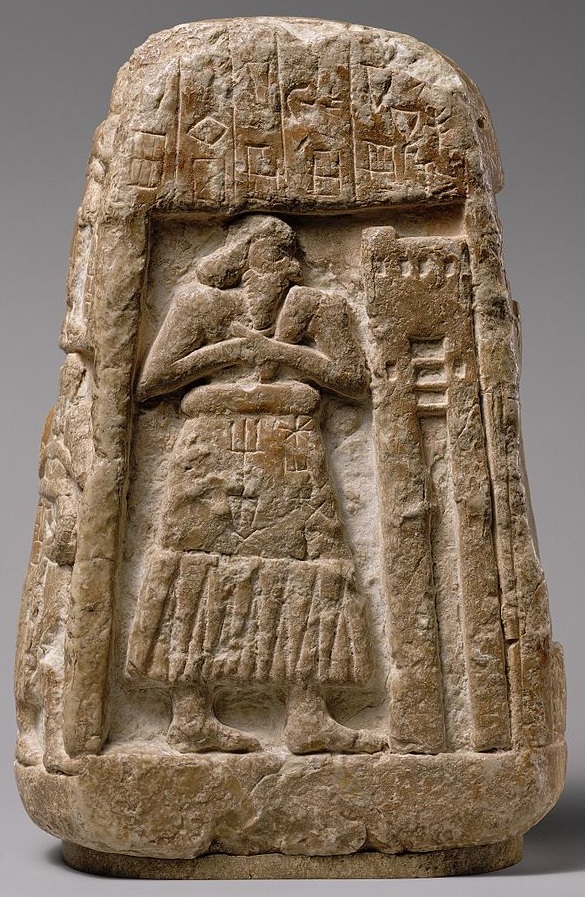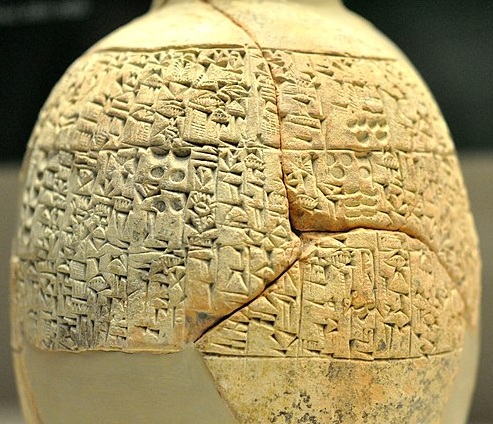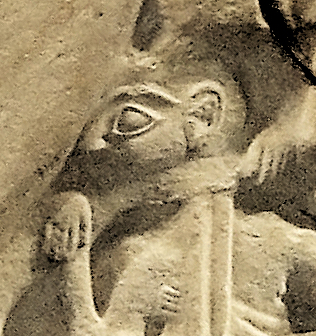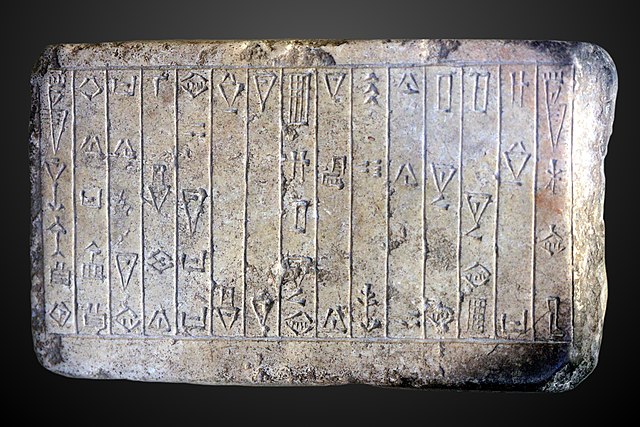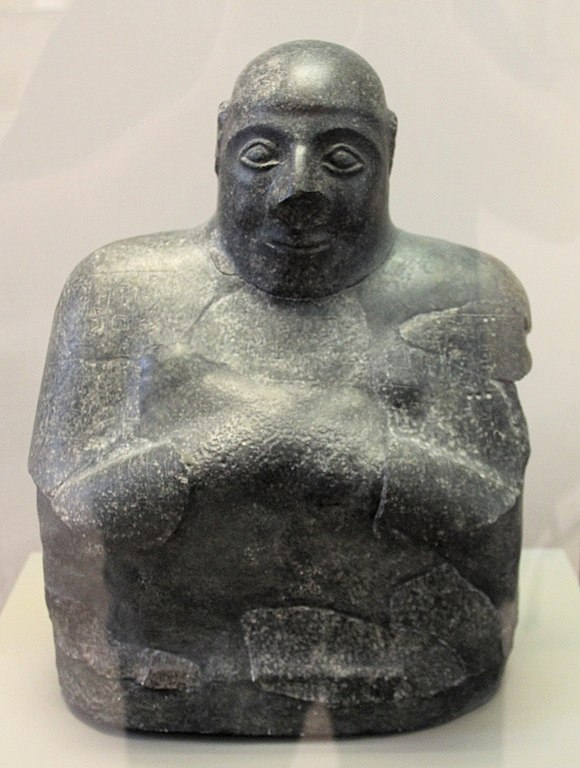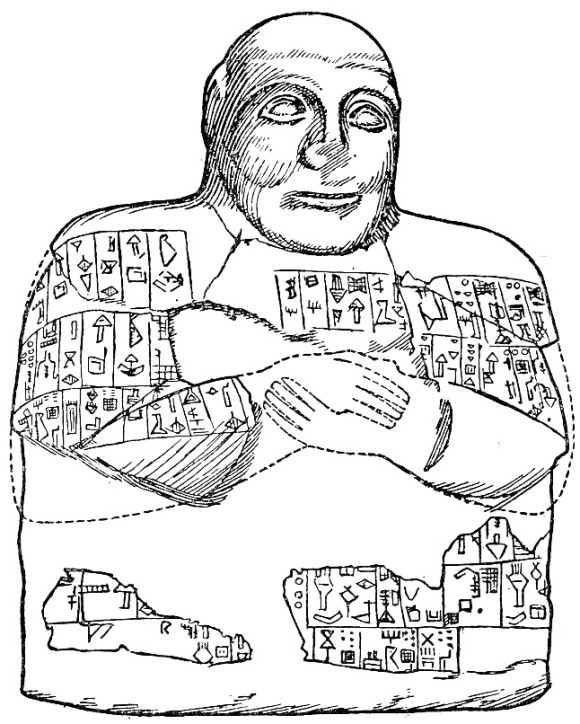
| UMMA
Aerial view of Umma
Umma Location : Dhi Qar Province, Iraq
Region : Mesopotamia
Coordinates : 31°40'02 N 45°53'15 E
Type : Settlement
Umma (Sumerian: umma; modern Umm al-Aqarib, Dhi Qar Province in Iraq, formerly also called Gishban) was an ancient city in Sumer. There is some scholarly debate about the Sumerian and Akkadian names for this site.
Traditionally, Umma was identified with Tell Jokha. More recently it has been suggested that it was located at Umm al-Aqarib, less than 7 km (4.3 mi) to its northwest or was even the name of both cities.
History :
Best known for its long frontier conflict with Lagash, as reported circa 2400 BC by Entemena, the city reached its zenith c. 2275 BC, under the rule of Lugal-Zage-Si who also controlled Ur and Uruk. Under the Ur III dynasty, Umma became an important provincial center. Most of the over 30,000 tablets recovered from the site are administrative and economic texts from that time. They permit an excellent insight into affairs in Umma. The Umma calendar of Shulgi (c. 21st century BC) is the immediate predecessor of the later Babylonian calendar, and indirectly of the post-exilic Hebrew calendar. Umma appears to have been abandoned after the Middle Bronze Age.
Archaeology
:
In 2017, the Slovak Archaeological and Historical Institute began excavations at Tell Jokha.
Stele of Ushumgal, 2900 - 2700 BCE. Probably from Umma
Vase of King Gishakidu, king of Umma, and son of Ur-Lumma. This cuneiform text gives the city of Umma's account of its long-running border dispute with Lagash. Circa 2350 BCE. From Umma, Iraq. The British Museum, London
Votive plaque offered by Bara-irnun, queen of Umma, to God Šara in gratitude for sparing her life. Date circa 2370 BC
Looting :
Imprisoned man of Umma on the Stele of the Vultures
An inscription from Umma dated c. 2130 BCE. "Lugalannatum prince of Umma... built the E.GIDRU [Sceptre] Temple at Umma, buried his foundation deposit [and] regulated the orders. At that time, Si'um was king of Gutium." (Collection of the Louvre Museum) During the 2003 invasion of Iraq, after Coalition bombing began, looters descended upon the site which is now pockmarked with hundreds of ditches and pits. The prospects for future official excavation and research were seriously compromised in the process.
In 2011, Global Heritage Network, which monitors threats to cultural heritage sites in developing nations, released aerial images comparing Umma in 2003 and 2010, showing a landscape devastated by looters' trenches during that time—approximately 1.12 square km in total. Additional images relevant to the situation at Umm al-Aqarib are included in Tucker's article on the destruction of Iraq's archaeological heritage.
Rulers
of Umma :
First Dynasty of Umma :
Second Dynasty of Umma :
An official of Umma, circa 2400 BC :
Diorite statue of Lupad, an official of the city of Umma, with inscriptions recording the purchase of land in Lagash. Early Dynastic Period III, c. 2400 BC Source :
https://en.wikipedia.org/ |
